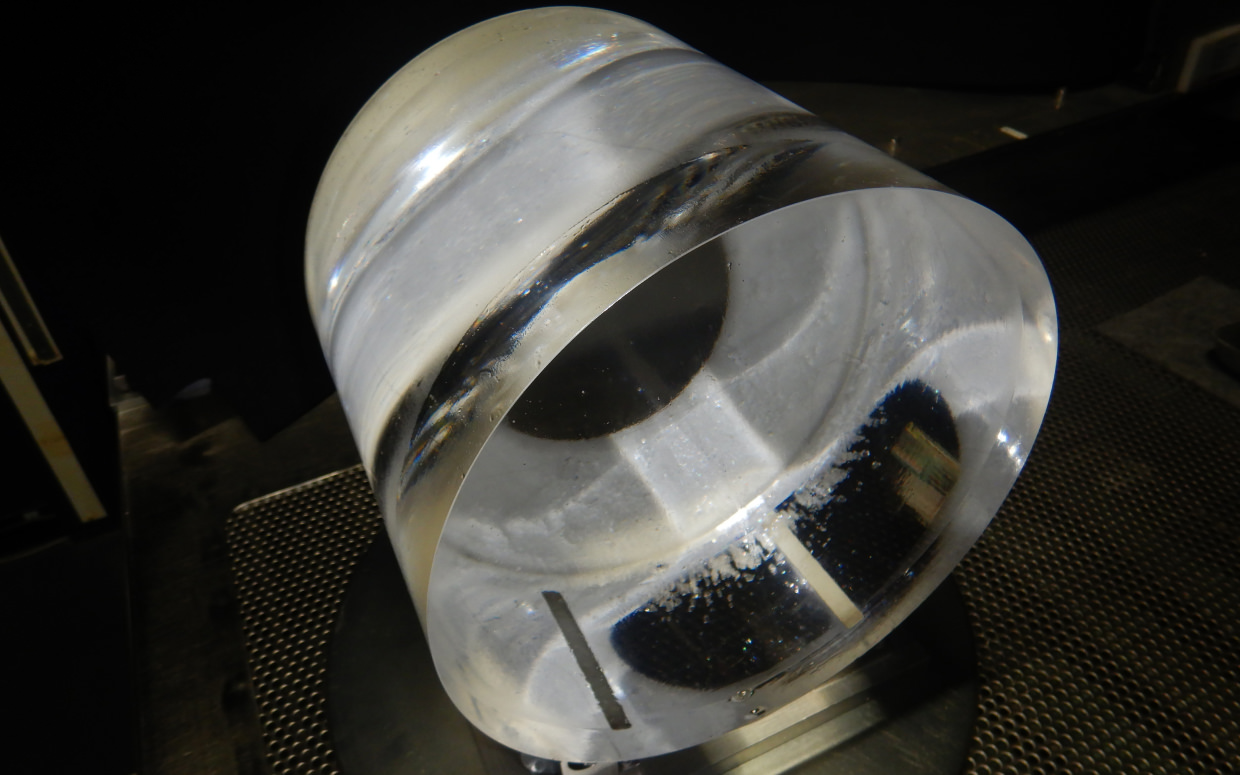Materials
Nikon primarily manufactures materials used in optical systems, and material development is the starting point for consistent manufacturing of these systems. It is necessary to develop material compositions and manufacturing processes, support mass production, and evaluate and guarantee quality. Materials suitable for various wavelengths of light are required, including visible natural light for cameras and binoculars, deep ultraviolet laser light for lithography systems, and near-infrared laser light for microscopes. At the same time, from a productivity standpoint, materials must also consider cost and ease of processing.
Fluorite
Synthesized fluorite is characterized by high transmittance and small change in refractive index over a wide wavelength range from ultraviolet to infrared. Chromatic aberration can be corrected by combining it with general optical glass. Fluorite raw materials are melted at high temperatures and crystals are grown over a long period to the required crystal size. At Nikon, fluorite is used to powerfully correct chromatic aberration and to make optical components used in lithography systems and telephoto lenses for cameras smaller and lighter.

Extra-low Dispersion Glass
The wavelength dependence of the refractive index differs from that of general optical glass in certain wavelength ranges. This allows for effective chromatic aberration correction when combined with general optical glass. We develop a composition to achieve the required optical properties and develop a manufacturing process suited to it. It is easier to manufacture and process than synthesized fluorite, which has similar optical properties, and can be used in many optical products. At Nikon, it is used to correct chromatic aberration in instruments such as binoculars, telescopes, and camera lenses.

Resin for Phase Fresnel Lenses
Phase Fresnel lens bends light using the phenomenon of diffraction. Correction of chromatic aberration can be achieved by combining a phase Fresnel lens with a conventional refractive lens. By making this lens from resin, Nikon is able to further reduce weight of telephoto lenses and binoculars. In developing resin materials, we design compositions and processes that allow for easy molding of diffraction gratings while maintaining the desired optical properties.

You can search for articles related to Nikon’s technology, research and development by tag.
